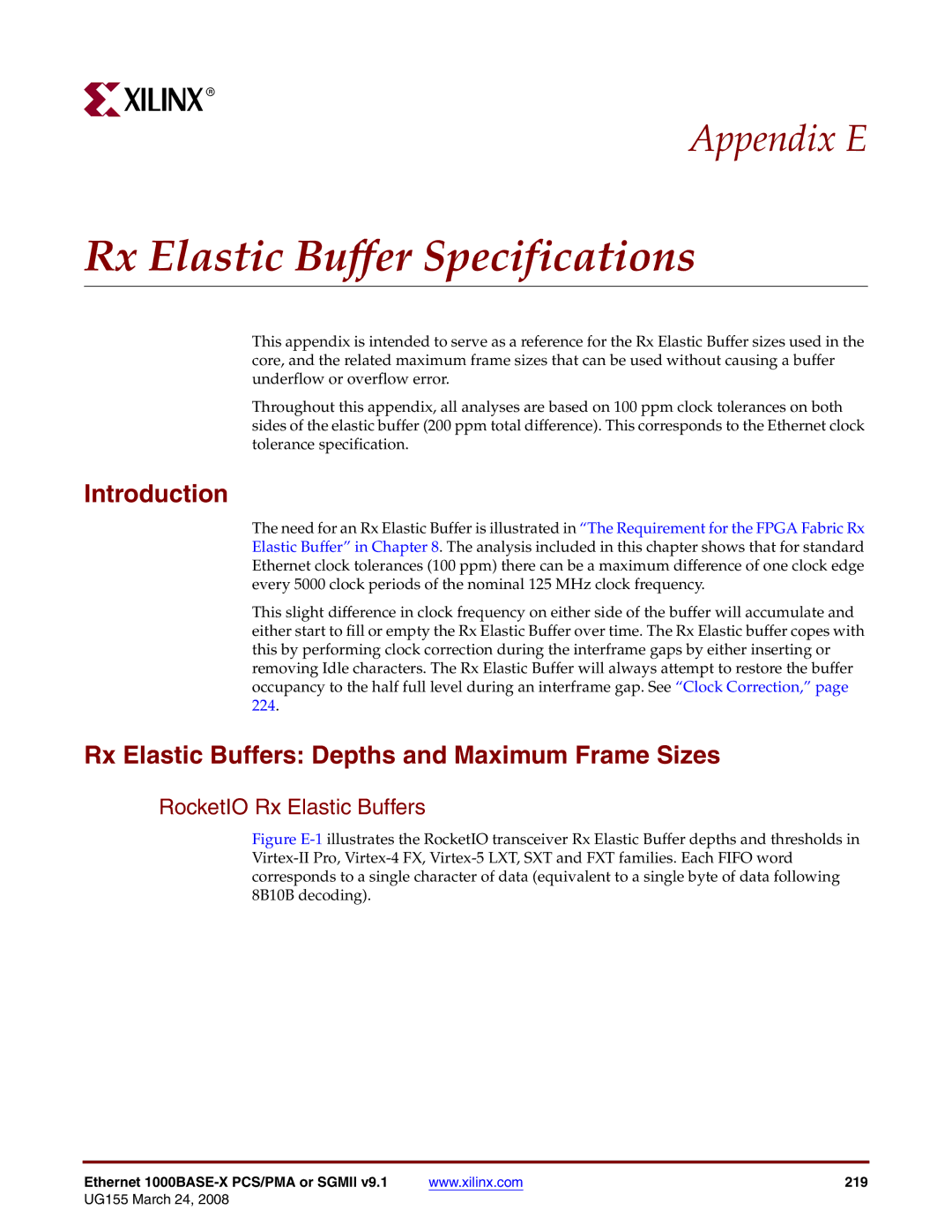
R
Appendix E
Rx Elastic Buffer Specifications
This appendix is intended to serve as a reference for the Rx Elastic Buffer sizes used in the core, and the related maximum frame sizes that can be used without causing a buffer underflow or overflow error.
Throughout this appendix, all analyses are based on 100 ppm clock tolerances on both sides of the elastic buffer (200 ppm total difference). This corresponds to the Ethernet clock tolerance specification.
Introduction
The need for an Rx Elastic Buffer is illustrated in “The Requirement for the FPGA Fabric Rx Elastic Buffer” in Chapter 8. The analysis included in this chapter shows that for standard Ethernet clock tolerances (100 ppm) there can be a maximum difference of one clock edge every 5000 clock periods of the nominal 125 MHz clock frequency.
This slight difference in clock frequency on either side of the buffer will accumulate and either start to fill or empty the Rx Elastic Buffer over time. The Rx Elastic buffer copes with this by performing clock correction during the interframe gaps by either inserting or removing Idle characters. The Rx Elastic Buffer will always attempt to restore the buffer occupancy to the half full level during an interframe gap. See “Clock Correction,” page 224.
Rx Elastic Buffers: Depths and Maximum Frame Sizes
RocketIO Rx Elastic Buffers
Figure E-1 illustrates the RocketIO transceiver Rx Elastic Buffer depths and thresholds in Virtex-II Pro, Virtex-4 FX, Virtex-5 LXT, SXT and FXT families. Each FIFO word corresponds to a single character of data (equivalent to a single byte of data following 8B10B decoding).
Ethernet | www.xilinx.com | 219 |
